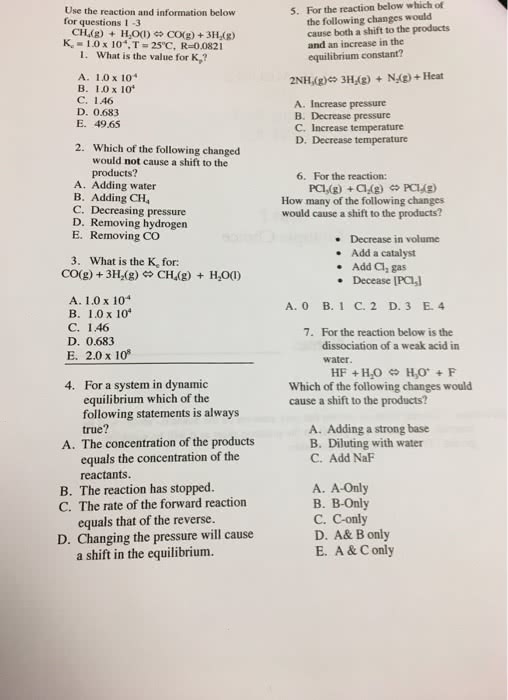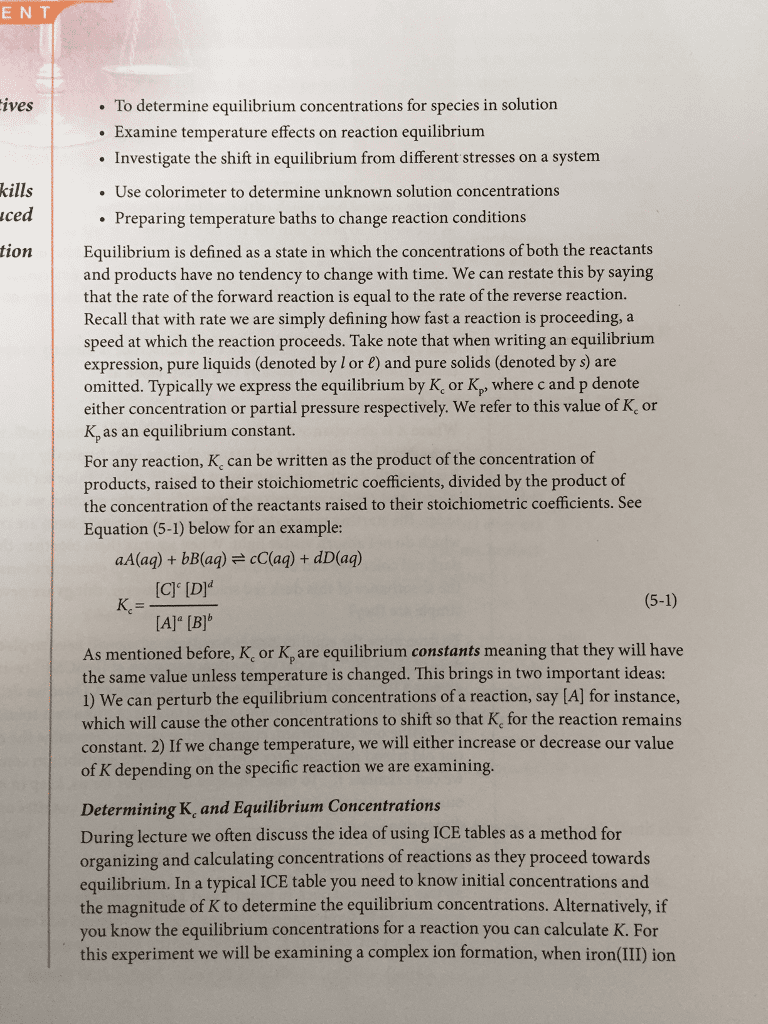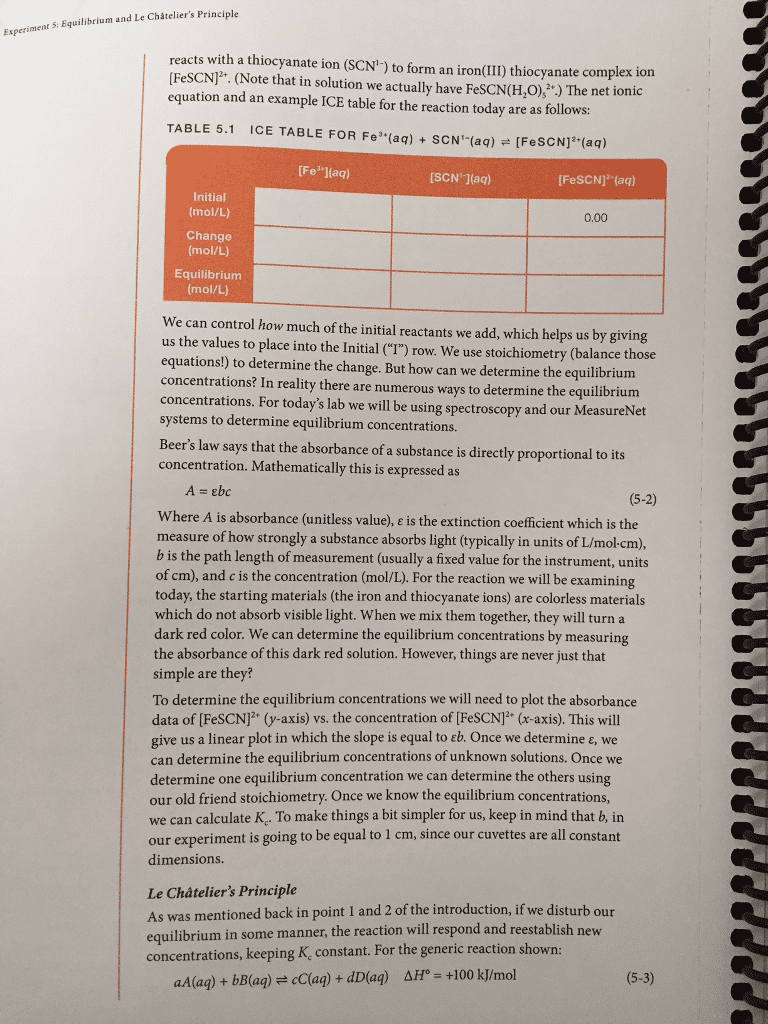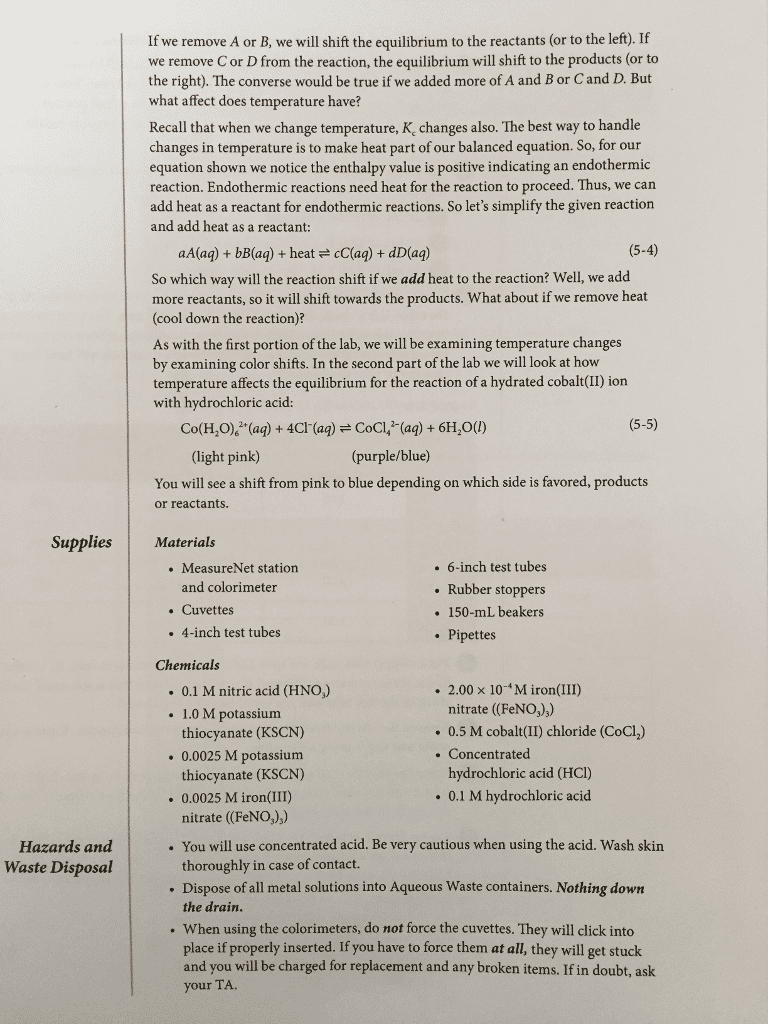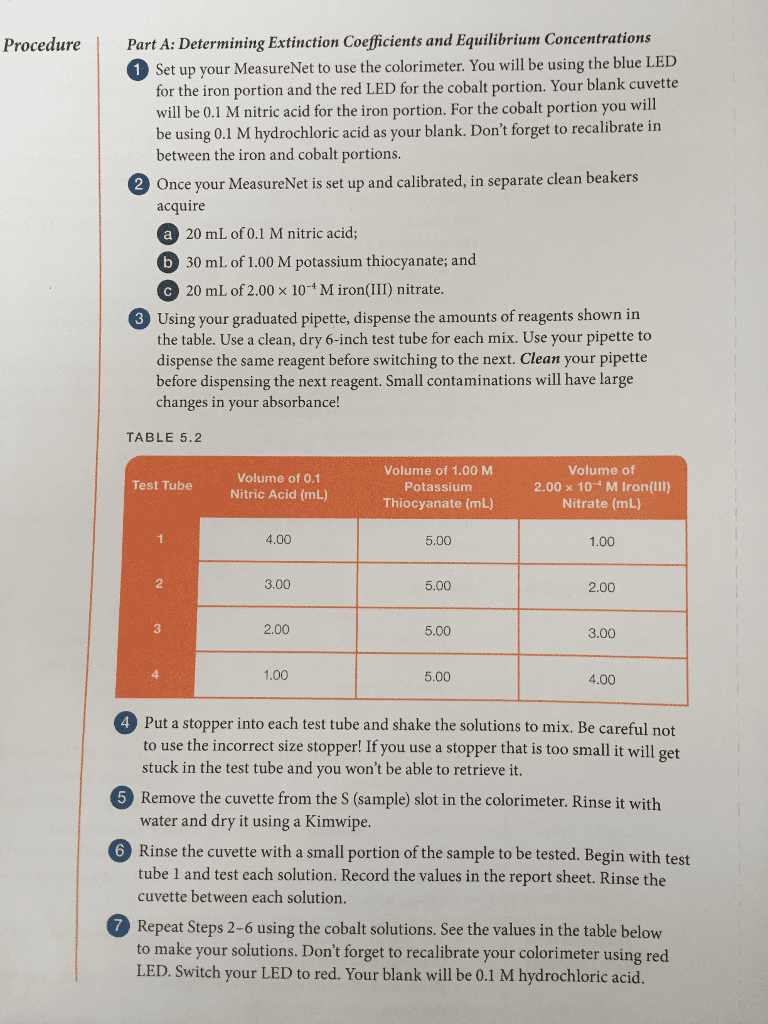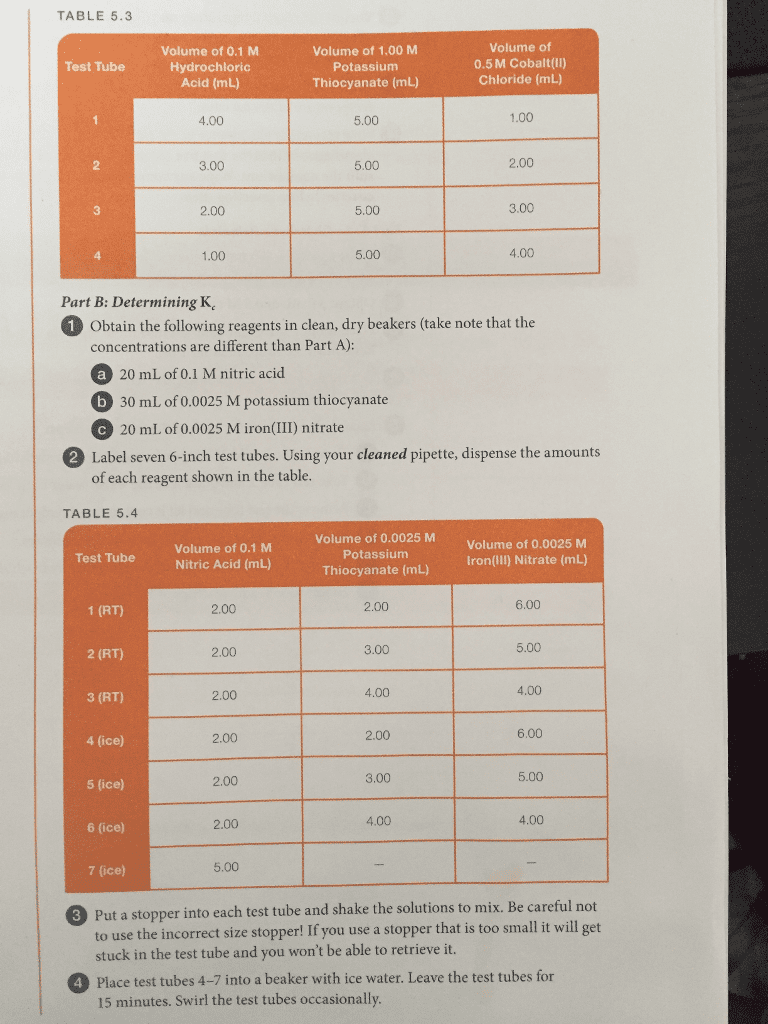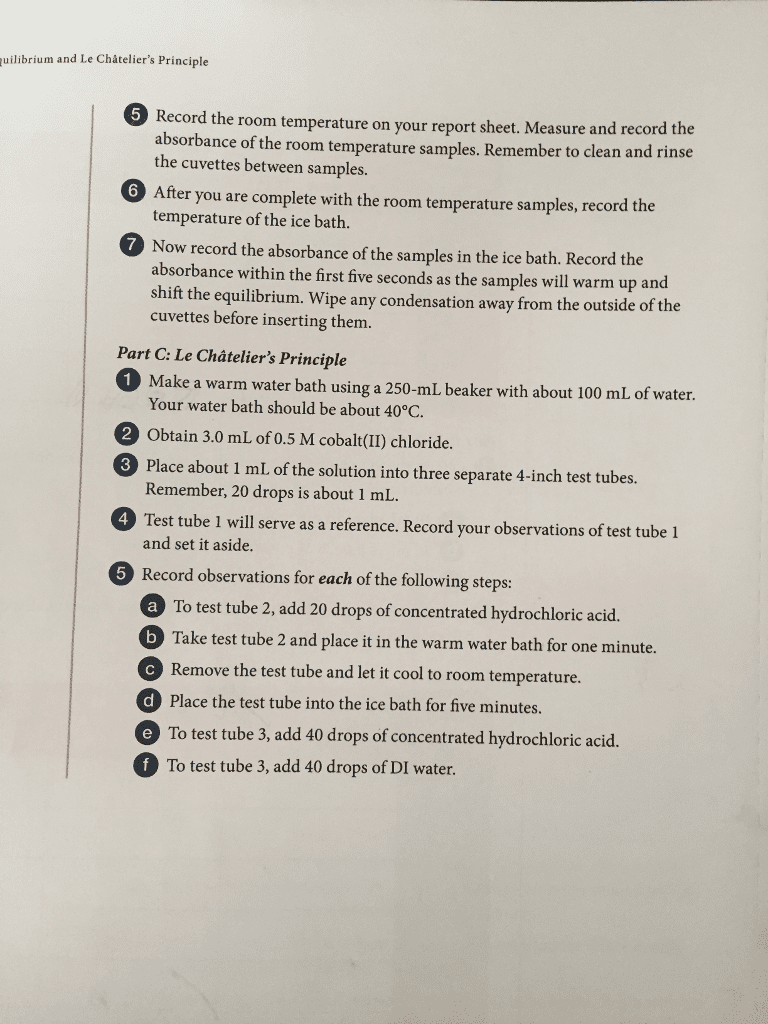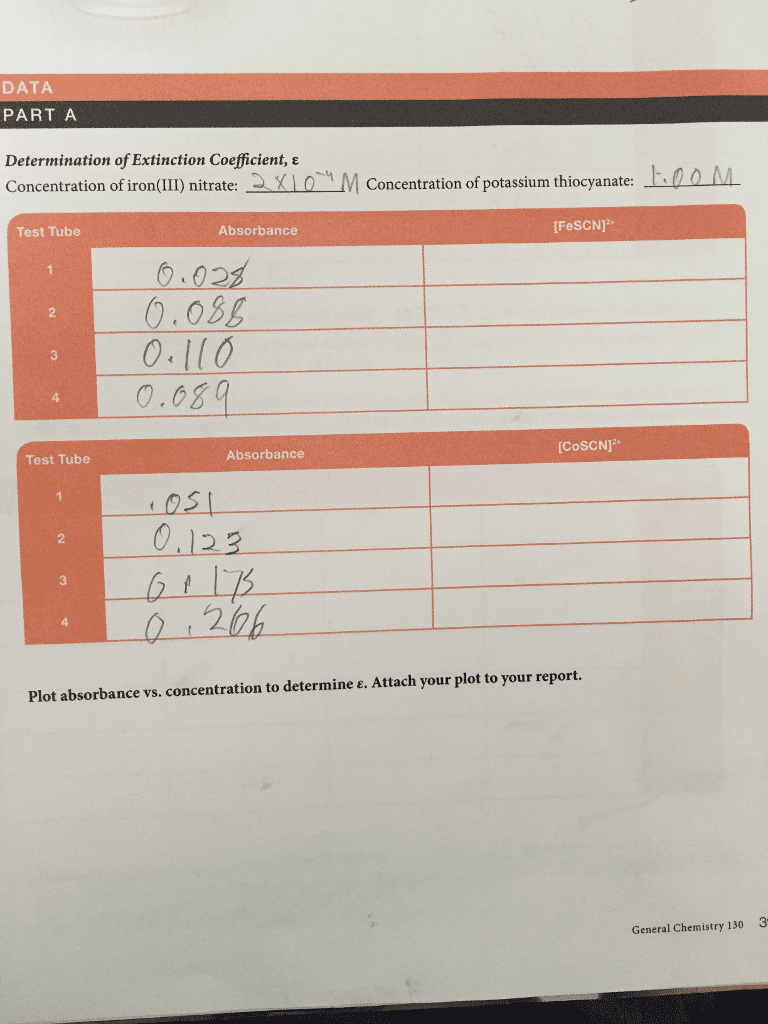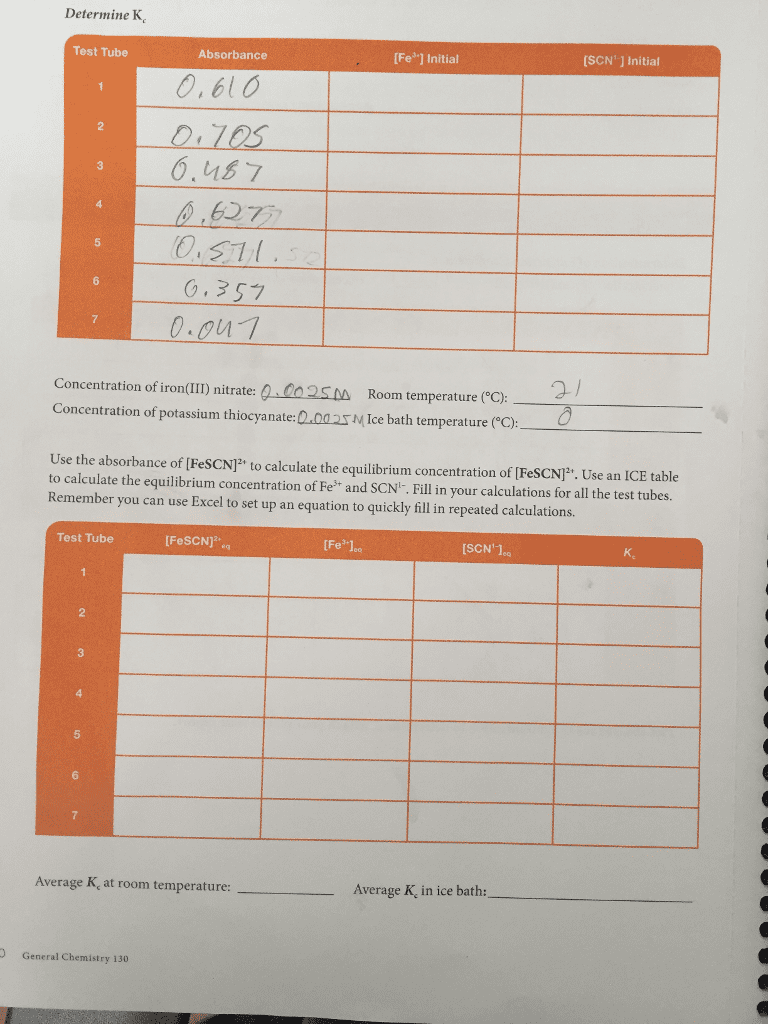CHEM 1032 Chapter Notes - Chapter 14: Scale-Invariant Feature Transform, Inert Gas, Endothermic Process
Document Summary
Recall from the previous chapter that reaction rates generally increase with increasing with concentration of the reactants( unless the reaction order is zero) and decrease with decreasing concentration of the reactants. (cid:1834)2(cid:4666)(cid:4667)+(cid:1835)2(cid:4666)(cid:4667) 2(cid:1834)(cid:1835)(cid:4666)(cid:4667) A reaction such as this one is reversible meaning it can forward and reverse directions. Hydrogen and iodide react and their concentration decrease in turn decrease the rate of forward of reaction. As the concentration of hi increases the reverse reaction begins to reverse. Eventually the rate of the reverse reaction which has been increasing equals the rate of forward reaction which has been decreasing. Dynamic equilibrium for a chemical reaction is the condition in which the rate of the forward reaction equals the rate of the reverse reaction. It is called dynamic because the forward and reverse reactions are still occurring but at the same rate. The concentrations don"t change of products and reactants.


